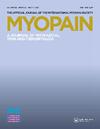Fibromyalgia Syndrome in Patients with Nasal Septum Deviation
引用次数: 1
Abstract
Abstract Objectives: Some studies conducted with patients with obstructive sleep apnea syndrome [OSAS] have suggested an association between sleep-disordered breathing [SDB] and fibromyalgia syndrome [FMS]. Nasal septum deviation [NSD] is a common physical disorder of the nose and it manifests itself with similar complaints, like respiratory distress and headache, as in patients with OSAS. The aim of this study was to determine the frequency of FMS in patients with NSD. Methods: Consecutive patients, 18 to 60 years old, evaluated in an academic otorhinolaryngology outpatient clinic were prospectively recruited for this study. Patients with nasal septal deviation were included in the nasal septum deviation group. Patients without nasal symptom deviation were recruited to serve as controls. All recruited cases were assessed by a single physiatrist for FMS. The FMS diagnosis was made on the basis of the 1990 American College of Rheumatology Research Classification Criteria. Results: One hundred ninety-nine consecutive patients, 18 to 60 years old, were enrolled in the study. Patients were divided into two groups as those with nasal symptom deviation [n = 115] and those without nasal symptom deviation [control group, n = 84]. Fibromyalgia syndrome was diagnosed in six NSD patients [5.2%] and in four [4.8%] control patients. No differences were noted in the prevalence of FMS between the two groups [p = 0.578]. Conclusion: In this study, we demonstrated a normal prevalence of FMS among patients with NSD. Although some studies suggest a relation between sleep disordered breathing and FMS, we could not find any relationship between NSD and FMS. This result may be associated with the fact that patients with OSAS and morbid obesity were excluded from our study. Future studies are warranted to clarify the association between obstructive sleep-disordered breathing and FMS.鼻中隔偏曲患者的纤维肌痛综合征
【摘要】目的:一些对阻塞性睡眠呼吸暂停综合征(OSAS)患者进行的研究表明,睡眠呼吸障碍(SDB)与纤维肌痛综合征(FMS)之间存在关联。鼻中隔偏曲(NSD)是一种常见的鼻子生理障碍,它表现为呼吸窘迫和头痛,与OSAS患者相似。本研究的目的是确定非功能性障碍患者发生FMS的频率。方法:本研究前瞻性地招募了在学术耳鼻喉科门诊评估的18至60岁的连续患者。鼻中隔偏曲患者为鼻中隔偏曲组。选取无鼻症状偏差的患者作为对照。所有招募的病例均由一名理疗师对FMS进行评估。FMS诊断是在1990年美国风湿病研究学院分类标准的基础上做出的。结果:199名患者连续入组,年龄在18至60岁之间。将患者分为有鼻症状偏差组[n = 115]和无鼻症状偏差组[n = 84]。6例NSD患者(5.2%)和4例对照患者(4.8%)被诊断为纤维肌痛综合征。两组FMS患病率差异无统计学意义[p = 0.578]。结论:在这项研究中,我们证明了在NSD患者中FMS的正常患病率。虽然一些研究表明睡眠呼吸障碍与FMS之间存在关系,但我们没有发现NSD与FMS之间存在任何关系。这一结果可能与OSAS和病态肥胖患者被排除在我们的研究之外有关。未来的研究有必要澄清阻塞性睡眠呼吸障碍与FMS之间的关系。
本文章由计算机程序翻译,如有差异,请以英文原文为准。
求助全文
约1分钟内获得全文
求助全文

 求助内容:
求助内容: 应助结果提醒方式:
应助结果提醒方式:


